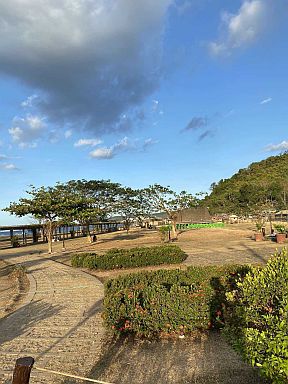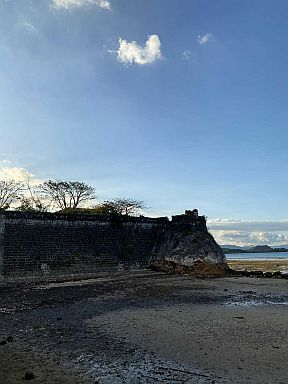Legacy of Fort Sta. Isabel: The Sentinel of Palawan
In the heart of Palawan, amidst the serene beauty of Taytay Bay, stands a monument of historical resilience and architectural marvel—Fort Sta. Isabel. Originally conceived as a wooden palisade in 1667 by Augustinian Recollect priests, this fortress has weathered the sands of time, evolving into a limestone bastion that not only protected the people but also became a symbol of Spanish naval might in the Philippines.


The need for a more formidable defense led to the construction of a stone fort under the meticulous eye of Spanish military engineer Antonio Fernandez de Rojas in 1721. Positioned strategically on a mogote, the fort overlooked the scenic Bahia de Taytay, serving as a deterrent to would-be invaders and a beacon of Spanish authority. The transformation was not just physical but emblematic, as King Philip V himself endorsed the fort, marking it with a heraldic coat-of-arms and religious symbols that mirrored the spiritual and military ethos of that era.
By 1739, Fort Sta. Isabel was an imposing structure, as detailed by the Spanish military cartographer Fernando Valdez Tamon. It featured a 96-foot long stonework curtainwall flanked by bastions, providing a formidable defense against the frequent raids by Moro pirates. These attacks were not just military confrontations but also cultural clashes, with the fort acting as a protective mother hen shielding her chicks— the local populace and the Spanish settlers.
One cannot talk about Fort Sta. Isabel without mentioning the bravery of Don Geronimo Sundulion. During a 21-day siege in 1739, this local hero demonstrated extraordinary courage. Instead of revealing the fort’s secrets to the pirates, he led them into a trap, sacrificing his life but saving his town. His valor is a poignant reminder of the fort’s significance not only as a military installation but as a custodian of local heritage and pride.
Over the centuries, Fort Sta. Isabel morphed from a mere military outpost to the administrative and spiritual heart of the region. It was the seat of the Gobierno Alcadia-Mayor de Calamianes by 1851, signifying its importance not just in defense but also as a central hub of governance and ecclesiastical affairs. The transformation of part of the fort into the Church of Sta. Monica further underscores its dual role in Taytay’s societal and spiritual fabric.
Today, despite the ravages of time and nature, Fort Sta. Isabel stands as a testament to the rich history of Palawan and the enduring spirit of its people. It serves not only as a reminder of the past conflicts and colonial dominance but also as a beacon of cultural identity and pride for the people of Taytay. For visitors, it offers a glimpse into the architectural and historical richness of the Philippines, making it a must-visit landmark that bridges the past and the present.
In sharing this story, we not only recount the tale of a fortress but also celebrate the resilience and spirit of the Filipino people. Fort Sta. Isabel, with its storied walls and historic battlements, continues to inspire and educate all who wander within its shadows. It stands, not just as a structure of stone and mortar, but as a living monument to the heritage of Palawan.

